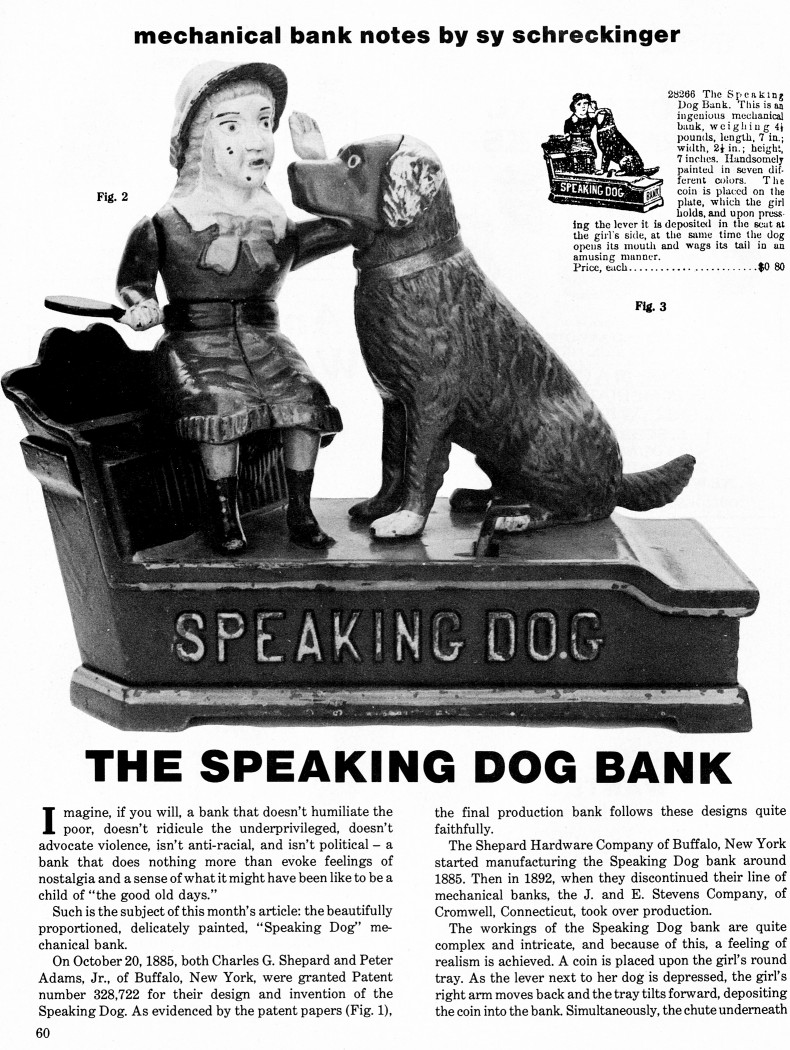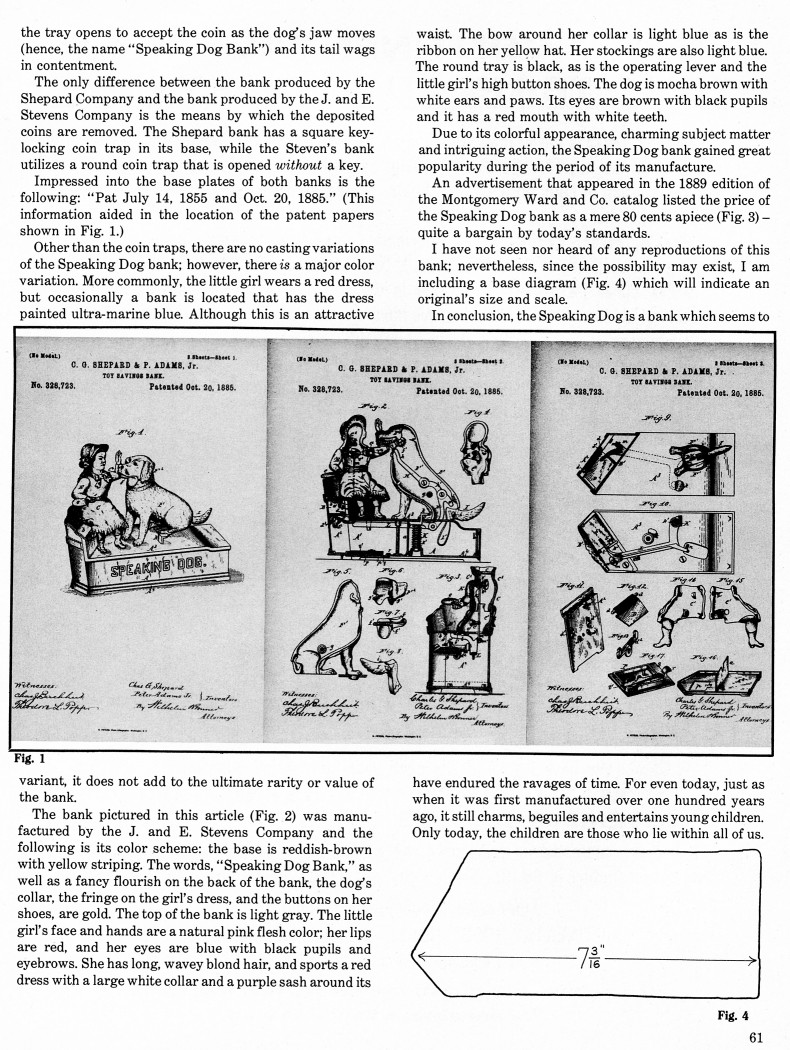|
The Speaking Dog Bank
by Sy Schreckinger – ANTIQUE TOY WORLD Magazine – April, 1984
Imagine, if you will, a bank that
doesn't humiliate the poor, doesn't ridicule the underprivileged, doesn't
advocate violence, isn't anti-racial, and isn't political – a bank that
does nothing more than evoke feelings of nostalgia and a sense of what it
might have been like to be a child of "the good old days."
Such is the subject of this month's article: the beautifully
proportioned, delicately painted, "Speaking Dog" mechanical bank.
On October 20, 1885, both Charles G. Shepard and Peter Adams, Jr., of
Buffalo, New York, were granted Patent number
328,723 for their design and
invention of the Speaking Dog. As evidenced by the patent papers (Fig. 1),
the final production bank follows these designs quite faithfully.
The Shepard Hardware Company of Buffalo, New York started
manufacturing the Speaking Dog bank around 1885. Then in 1892, when they
discontinued their line of mechanical banks, the J. and E. Stevens
Company, of Cromwell, Connecticut, took over production.
The workings of the Speaking Dog bank are quite complex and
intricate, and because of this, a feeling of realism is achieved. A coin
is placed upon the girl's round tray. As the lever next to her dog is
depressed, the girl's right arm moves back and the tray tilts forward,
depositing the coin into the bank. Simultaneously, the chute underneath
the tray opens to accept the coin as the dog's jaw moves (hence, the name
"Speaking Dog Bank") and its tail wags in contentment.
The only difference between the bank produced by the Shepard Company
and the bank produced by the J. and E. Stevens Company is the means by
which the deposited coins are removed. The Shepard bank has a square
key-locking coin trap in its base, while the Steven's bank utilizes a
round coin trap that is opened without a key.
Impressed into the base plates of both banks is the following: "Pat
July 14, 1855 and Oct. 20, 1885." (This information aided in the location
of the patent papers shown in Fig. 1.)
Other than the coin traps, there are no casting variations of the
Speaking Dog bank; however, there is a major color variation. More
commonly, the little girl wears a red dress, but occasionally a bank is
located that has the dress painted ultramarine blue. Although this is an
attractive variant, it does not add to the ultimate rarity or value of the
bank.
The bank pictured in this article (Fig. 2) was manufactured by the J.
and E. Stevens Company and the following is its color scheme: the base is
reddish-brown with yellow striping. The words, "Speaking Dog Bank," as
well as a fancy flourish on the back of the bank, the dog's collar, the
fringe on the girl's dress, and the buttons on her shoes, are gold. The
top of the bank is light gray. The little girl's face and hands are a
natural pink flesh color; her lips are red, and her eyes are blue with
black pupils and eyebrows. She has long, wavy blond hair, and sports a
red dress with a large white collar and a purple sash around its waist.
The bow around her collar is light blue as is the ribbon on her yellow
hat. Her stockings are also light blue. The round tray is black, as is the
operating lever and the little girl's high button shoes. The dog is mocha
brown with white ears and paws. Its eyes are brown with black pupils and
it has a red mouth with white teeth.
Due to its colorful appearance, charming subject matter and
intriguing action, the Speaking Dog bank gained great popularity during
the period of its manufacture.
An advertisement that appeared in the 1889 edition of the Montgomery
Ward and Co. catalog listed the price of the Speaking Dog bank as a mere
80 cents apiece (Fig. 3) – quite a bargain by today's standards.
I have not seen nor heard of any reproductions of this bank;
nevertheless, since the possibility may exist, I am including a base
diagram (Fig. 4) which will indicate an original's size and scale.
In conclusion, the Speaking Dog is a bank which seems to have endured
the ravages of time. For even today, just as when it was first
manufactured over one hundred years ago, it still charms, beguiles and
entertains young children. Only today, the children are those who lie
within all of us.
|


